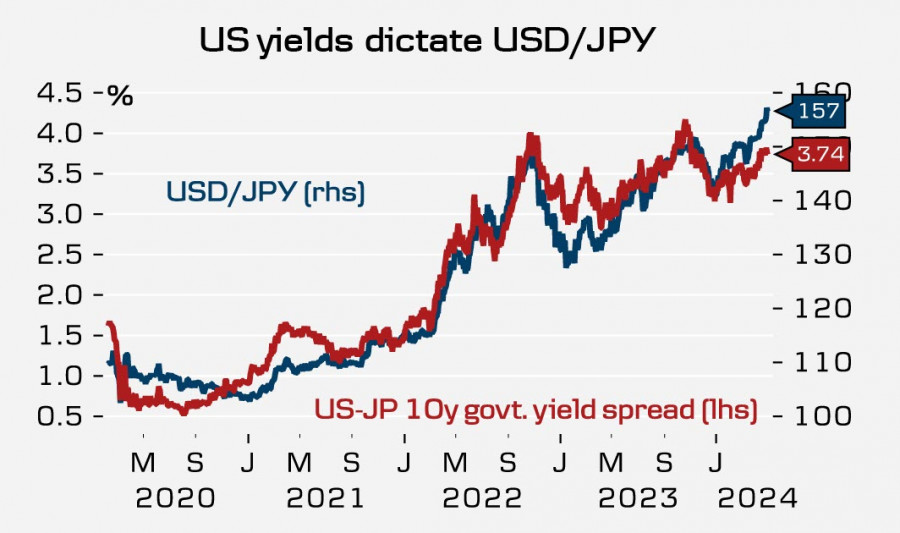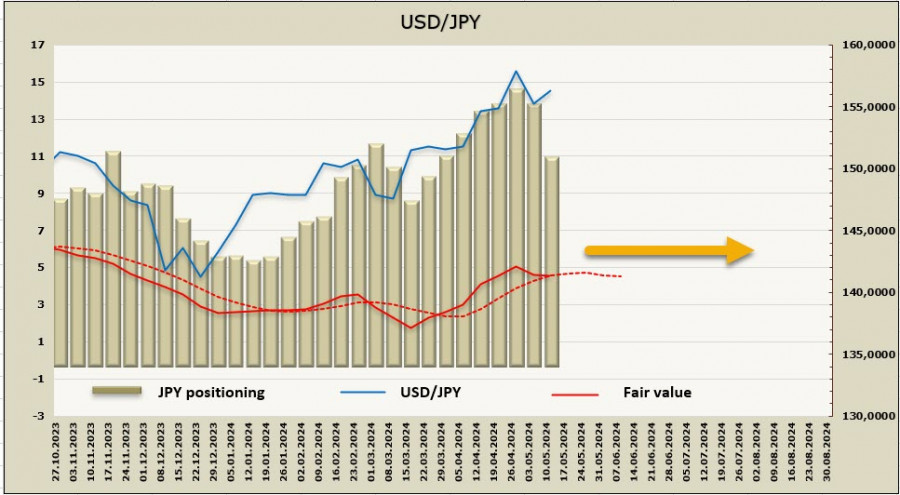See also


The yen was able to strengthen against the dollar after the Bank of Japan published a Summary of Opinions from its monetary policy meeting on April 25 and 26. The summary contained rather aggressive comments on two key topics for the yen: rate hikes and reducing bond buying. The document provided additional confirmation that the BOJ is preparing for a series of rate hikes and will reduce its purchases of long-term Japanese government bonds (JGB). The minutes contain clear hints that the central bank will combat a sustained depreciation in the yen.
While the issue of raising rates is a fairly obvious one, reducing bond purchases is an ambiguous step. The Japanese central government has been running budget deficits since 1993, and the government's funding comes from the constant issuance of bonds that the BOJ buys because they are unappealing to foreign investors due to nearly zero yields. The greater the yield differential between UST and JGB, the weaker the yen becomes.
If the BOJ is preparing to shift to quantitative tightening, then who will finance the government? Obviously, it is necessary either to achieve a sustainable budget surplus, which is currently impossible, or increase the appeal of bonds for foreign investors, which can only be achieved by raising yields. This, in turn, will again increase the burden on the budget due to higher interest payments.
The likely strategy will be to boost real household incomes, which explains the close attention to forecasts for average wage dynamics. Income growth would help keep inflation around 2%, justifying a rate hike and, consequently, higher bond yields.
Only time will tell whether this is the case or not, but the weak yen phase appears to be coming to an end as the negatives are clearly outnumbering the positives.
The net short JPY position sharply decreased by $2.4 billion to -$10.9 billion over the reporting week. The bearish bias remains intact, but the volume of short positions have been declining for two consecutive weeks, and the price no longer indicates a high probability of further growth in USD/JPY.
The yen is still trading near the 160 level, but there are lower chances of testing this level again. Objectively, the yen should weaken due to the substantial yield differential, but in the long term, the situation will change in its favor. The question is when these changes will be enough for the yen to start appreciating for objective reasons, rather than through monetary interventions. For speculators, betting on a weaker yen is becoming too risky. Therefore, the most obvious strategy is to sell USD/JPY on attempts to rise, anticipating a global reversal.
You have already liked this post today
*The market analysis posted here is meant to increase your awareness, but not to give instructions to make a trade.


InstaTrade in figures

Your IP address shows that you are currently located in the USA. If you are a resident of the United States, you are prohibited from using the services of InstaFintech Group including online trading, online transfers, deposit/withdrawal of funds, etc.
If you think you are seeing this message by mistake and your location is not the US, kindly proceed to the website. Otherwise, you must leave the website in order to comply with government restrictions.
Why does your IP address show your location as the USA?
Please confirm whether you are a US resident or not by clicking the relevant button below. If you choose the wrong option, being a US resident, you will not be able to open an account with InstaTrade anyway.
We are sorry for any inconvenience caused by this message.


